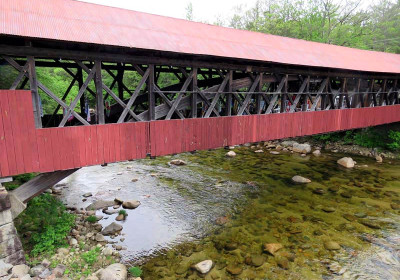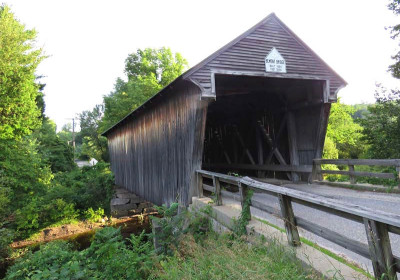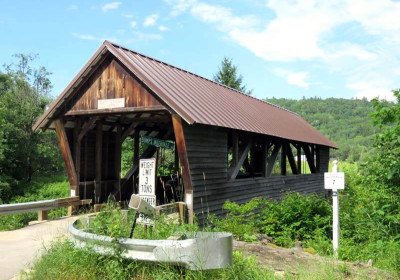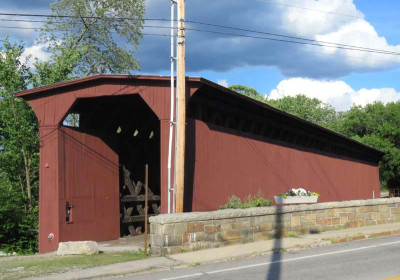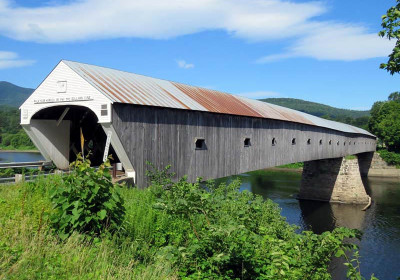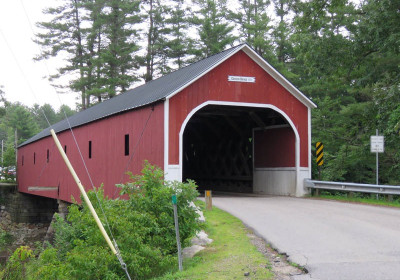New Hampshire
Images and history of New Hampshire's Covered Bridges
The 54 remaining Covered Bridges in New Hampshire represent a link with our past. They stand as monuments to builders who had the vision and the ability to design and construct engineering masterpieces of wood.
Men such as Ithiel Town, Stephen Long, James Tasker, and, more recently, Milton Graton have left a lasting impression on the landscape.
The romanticist might see that covered bridges represent a more relaxed time, free from the stress of the modern age. These structures evoke images of a slow horse and buggy ride to church on a quiet Sunday, a stolen kiss under the cover of the bridge, or the peacefulness of fishing from a seat on the edge of the bridge, line in the water yet indifferent as to whether or not a fish bites. The historian might see in these spans the development of truss types still in use today, the original attempts to understand the strength of materials, and the analysis of stress on complex structures. Everyone can agree that these bridges were essential to progress by replacing dangerous ferry crossings and reducing the isolation of rural areas, while increasing travel speed and aiding commerce.
Because of their obvious antiquity and their visual appeal, covered bridges have long been appreciated. New Hampshire's wooden bridges were highlighted in W. Edward White's 1942 booklet, "Covered Bridges in New Hampshire". Because of such advocacy, covered bridges became the first type of historic structures specifically protected by state law in New Hampshire. The Laws of the State of New Hampshire, 1963, Chapter 96, pertain to the preservation of these bridges. The law recognizes that wooden covered bridges are of historical interest and are desirable to retain. These bridges are eligible for state aid for their rehabilitation, and a public hearing is required when such bridges are proposed to be demolished.
Just fifty-four historical covered bridges remain of the almost four hundred covered bridges that once stood in New Hampshire. Many of those lost structures were destroyed by floods or fires, but even more were doomed by neglect.
Each covered bridge represents a moment in time. These structures will change. Some will disappear, succumbing to the ravages of time and the carelessness of man. The outward appearance of some bridges will change in the future as they are rebuilt. Many bridges will appear to grow stronger as everything around them ages, while others will appear ancient in their modern surroundings. Each bridge, however, contains a character and an individuality all its own.
The first covered bridge did not appear in New Hampshire until the 1820s. In addition to the historic bridges, there are eight that have been built in the latter part of the twentieth century and two in the twenty-first century. Three of the historic covered bridges are interstate bridges linking New Hampshire and Vermont, spanning the Connecticut River. These covered bridges technically belong to the State of New Hampshire, since New Hampshire's western state line extends to the west shoreline of the Connecticut River. All three of these covered bridges were originally toll bridges. At one time, thirty-five covered bridges, both highway and railroad, spanned the Connecticut River from the northern town of Pittsburg, New Hampshire, to the southern border of New Hampshire and Vermont, where the Connecticut River enters Massachusetts.
New Hampshire's Bridges photographed in July of 2019.


